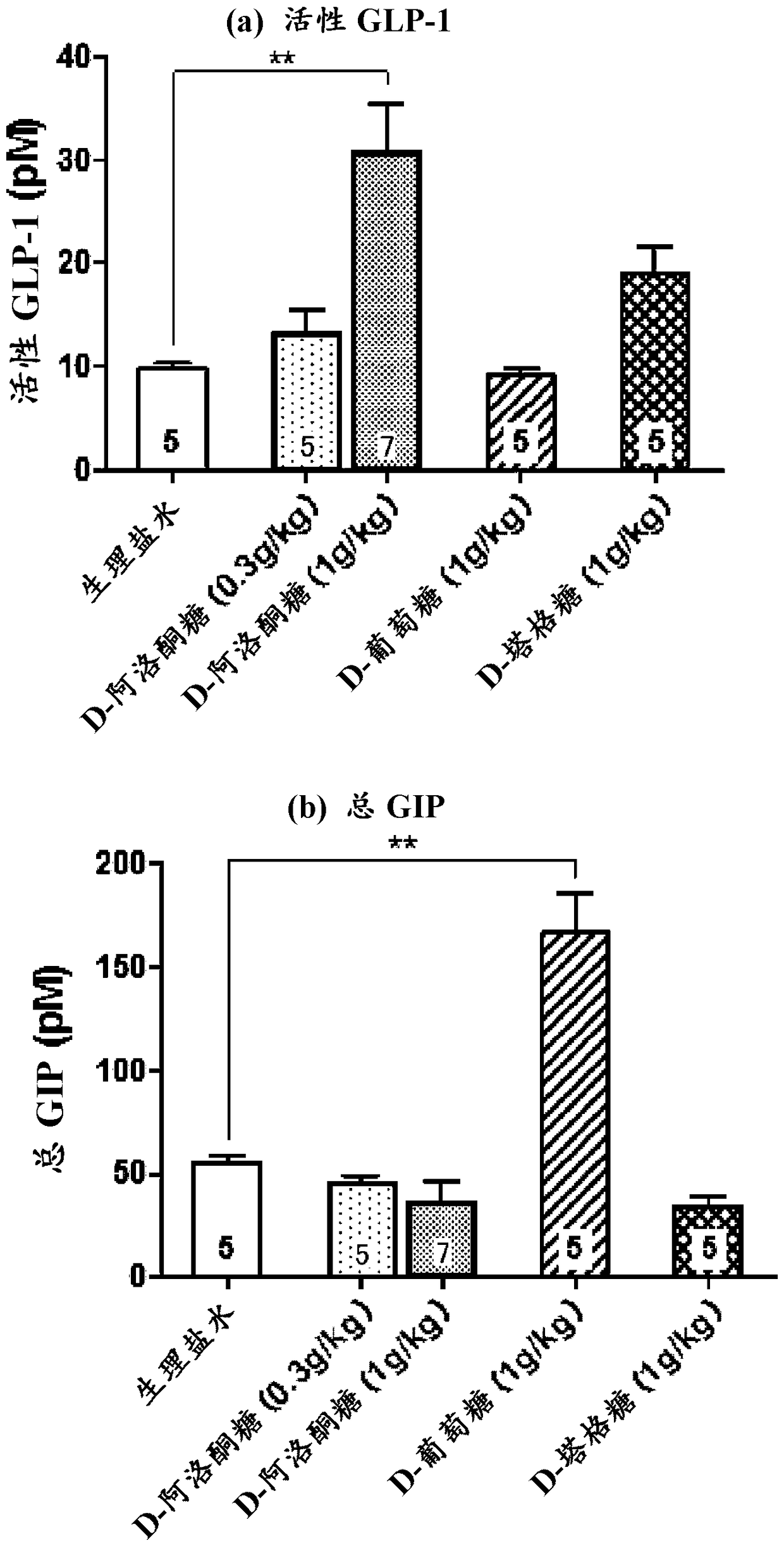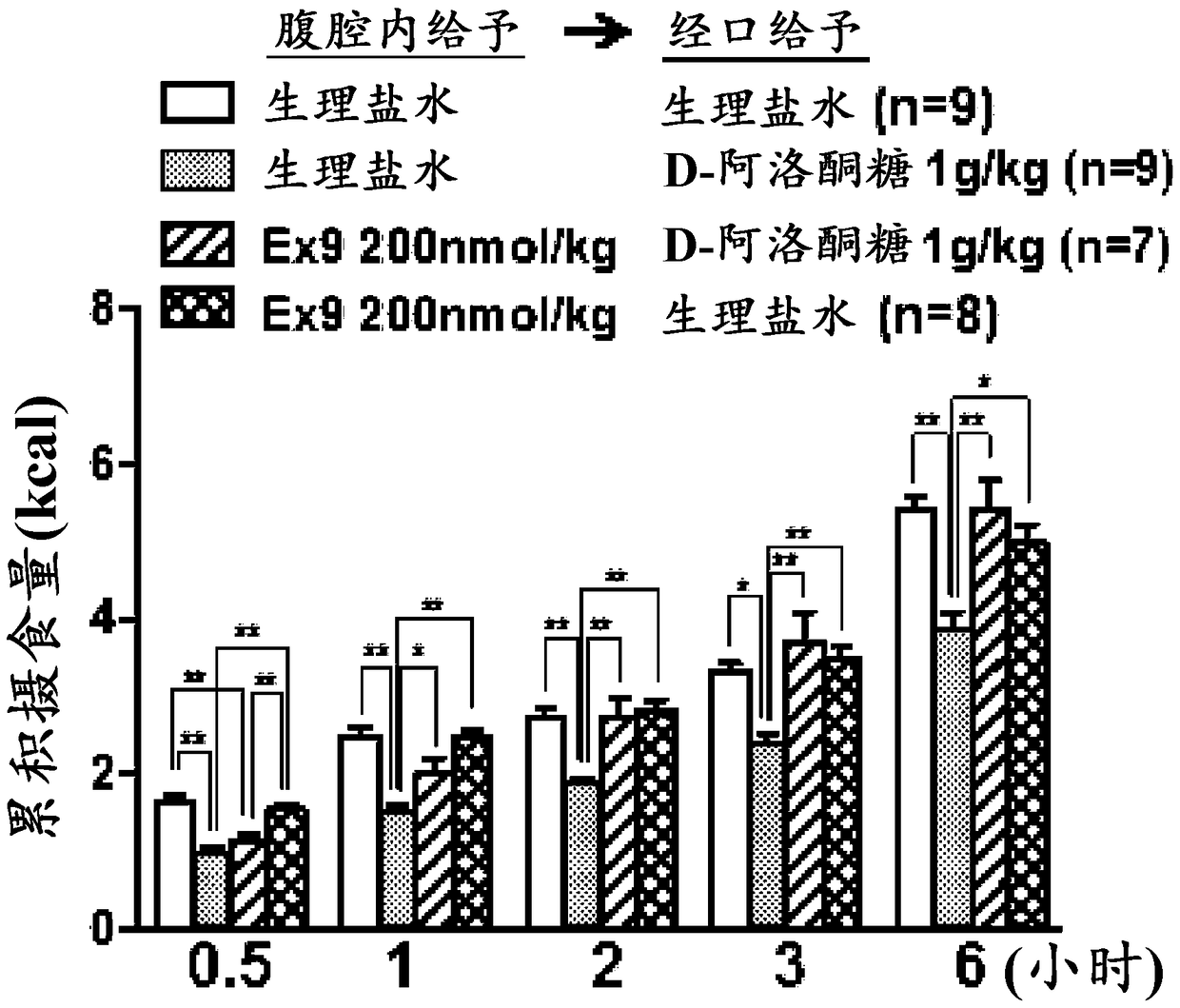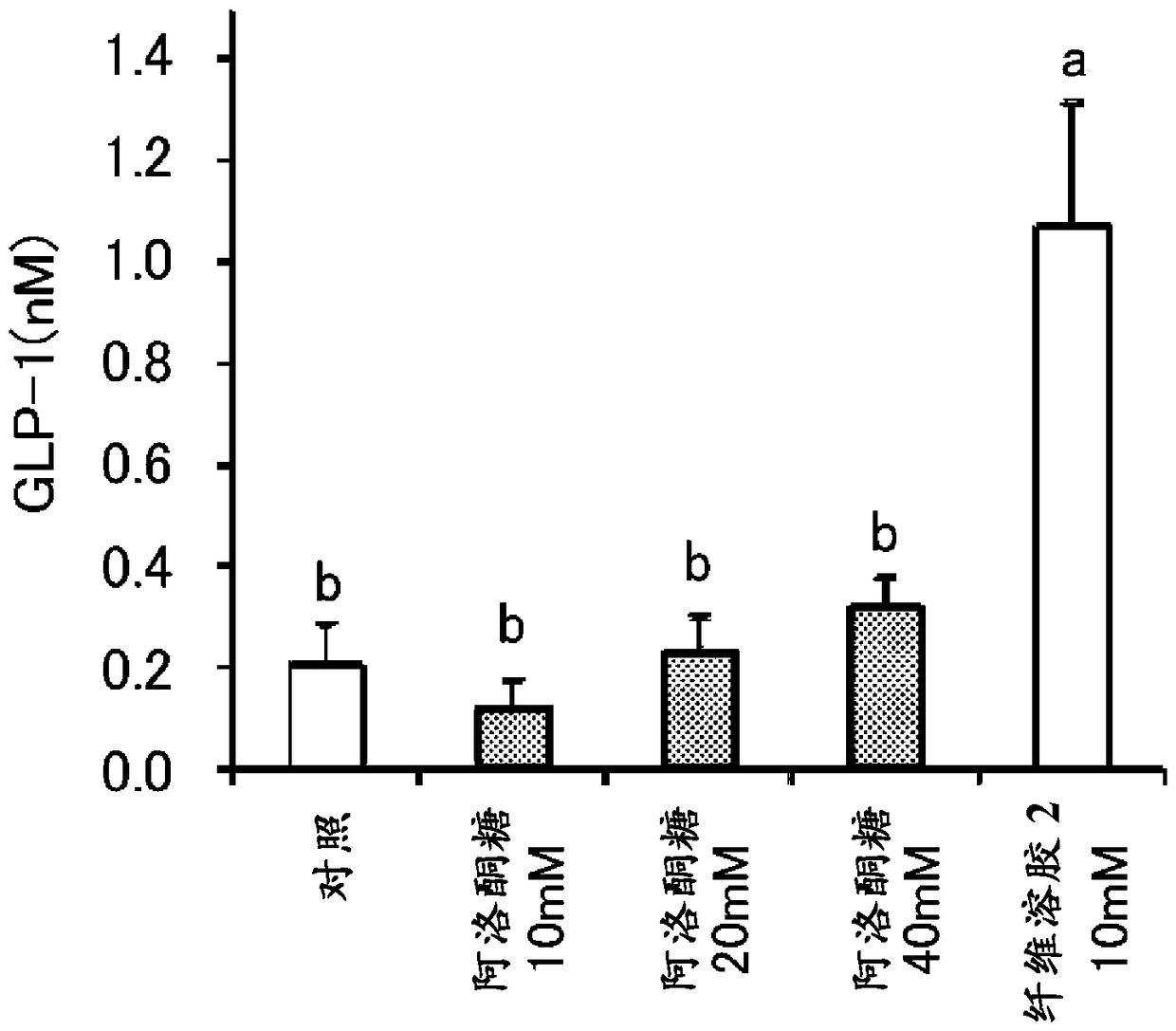Glp-1 secretagogue
A technology of GLP-1, 1. GLP-1, applied in the field of secretion promoters, can solve the problems of biased inhibition and inconvenience, and achieves a technology that is easy to use, promotes GLP-1 secretion, and has excellent GLP-1 secretion ability. Effect
- Summary
- Abstract
- Description
- Claims
- Application Information
AI Technical Summary
Problems solved by technology
Method used
Image
Examples
Embodiment 1
[0064] As experimental animals, C57BL / 6J male mice (9-11 weeks old) were used. D-Psicose 1 g / kg was orally administered at 10:00 am to the mice that had been fasted for 16 hours from 18:00 the day before the experiment. The oral administration amount is 10ml / kg. Portal vein blood was collected under isoflurane anesthesia before D-psicose administration and 30 minutes and 60 minutes after the administration. It should be noted that blood coagulation inhibitor (heparin (final concentration 50IU / ml)), peptide decomposition inhibitor (aprotinin (final concentration 500KIU / ml) and vildagliptin (Vildagliptin) were pre-added in the sampling syringe. (final concentration 10 μM)). The collected blood was cooled and centrifuged, and the obtained plasma was stored at -80°C until analysis. Quantitative analysis of active GLP-1, total GLP-1, and total GIP was performed using ELISA kits (manufactured by Millipore, EGLP-35K, EZGLP1T-36K, and EZRMGIP-55K, respectively). In addition, for s...
Embodiment 2
[0067] For C57BL / 6J male mice (9-11 weeks old) who had fasted for 16 hours from 18:00 the day before the experiment, D-psicose 0.3g / kg or 1g / kg, D-psicose at 10:00 am - Each 1 g / kg of tagatose or D-glucose, or physiological saline was administered orally. The oral administration amount is 10ml / kg. Thirty minutes after the administration, blood was collected from the portal vein under isoflurane anesthesia. It should be noted that blood coagulation inhibitor (heparin (final concentration 50IU / ml)), peptide decomposition inhibitor (aprotinin (final concentration 500KIU / ml) and vildagliptin (Vildagliptin) were pre-added in the sampling syringe. (final concentration 10 μM)). The collected blood was cooled and centrifuged, and the plasma was stored at -80°C until analysis. Quantitative analysis of active GLP-1 and total GIP was performed using the kits described above. Furthermore, regarding statistical analysis, one-way analysis of variance (without pairing) was performed, fol...
Embodiment 3
[0070] C57BL / 6J male mice (9-11 weeks old) were preliminarily bred in a separate cage for more than 1 week, and were manipulated by the experimenter to adapt to the feeding and experimental environment. After fasting for 16 hours from 18:00 on the day before the experiment, physiological saline or GLP-1 receptor inhibitor (Exendin-9, Ex-9, 200 nmol / kg) was intraperitoneally administered from 9:45, and immediately thereafter Physiological saline or 1 g / kg of D-psicose was orally administered. The administration volumes for intraperitoneal administration and oral administration were 5 ml / kg and 10 ml / kg, respectively. From 10:00 minutes, the mice were allowed to ingest CE-2 feed (general mouse feed for nutritionally balanced intake, manufactured by CLEA in Japan) freely, and after 0.5 hour, 1 hour, 2 hours, 3 hours and 6 hours, Food intake was measured over time. The amount of food intake was calculated as an energy intake (kcal) of 0 kcal per 1 g of D-psicose administered ora...
PUM
 Login to View More
Login to View More Abstract
Description
Claims
Application Information
 Login to View More
Login to View More - R&D
- Intellectual Property
- Life Sciences
- Materials
- Tech Scout
- Unparalleled Data Quality
- Higher Quality Content
- 60% Fewer Hallucinations
Browse by: Latest US Patents, China's latest patents, Technical Efficacy Thesaurus, Application Domain, Technology Topic, Popular Technical Reports.
© 2025 PatSnap. All rights reserved.Legal|Privacy policy|Modern Slavery Act Transparency Statement|Sitemap|About US| Contact US: help@patsnap.com



